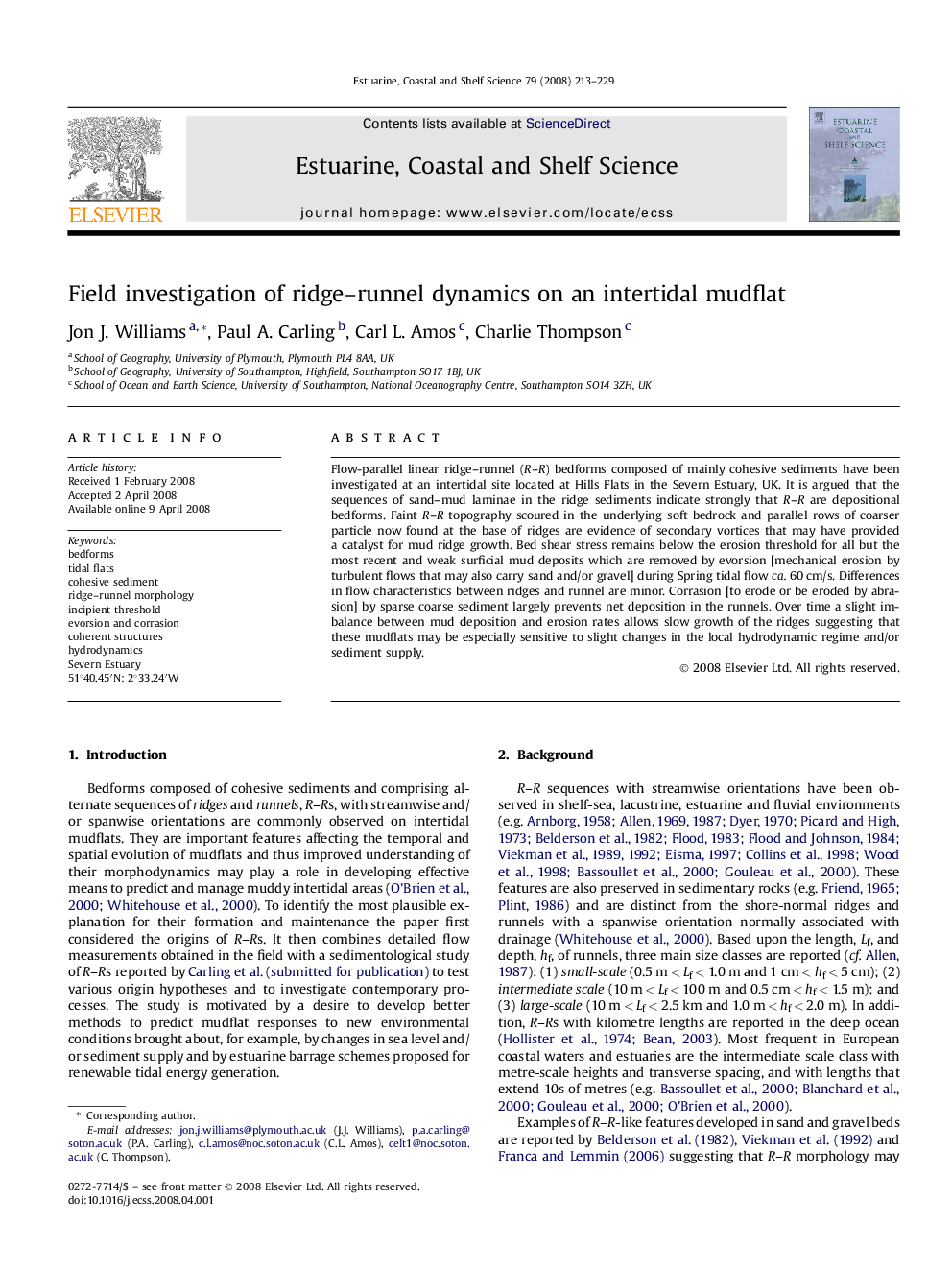| Article ID | Journal | Published Year | Pages | File Type |
|---|---|---|---|---|
| 4541824 | Estuarine, Coastal and Shelf Science | 2008 | 17 Pages |
Flow-parallel linear ridge–runnel (R–R) bedforms composed of mainly cohesive sediments have been investigated at an intertidal site located at Hills Flats in the Severn Estuary, UK. It is argued that the sequences of sand–mud laminae in the ridge sediments indicate strongly that R–R are depositional bedforms. Faint R–R topography scoured in the underlying soft bedrock and parallel rows of coarser particle now found at the base of ridges are evidence of secondary vortices that may have provided a catalyst for mud ridge growth. Bed shear stress remains below the erosion threshold for all but the most recent and weak surficial mud deposits which are removed by evorsion [mechanical erosion by turbulent flows that may also carry sand and/or gravel] during Spring tidal flow ca. 60 cm/s. Differences in flow characteristics between ridges and runnel are minor. Corrasion [to erode or be eroded by abrasion] by sparse coarse sediment largely prevents net deposition in the runnels. Over time a slight imbalance between mud deposition and erosion rates allows slow growth of the ridges suggesting that these mudflats may be especially sensitive to slight changes in the local hydrodynamic regime and/or sediment supply.
